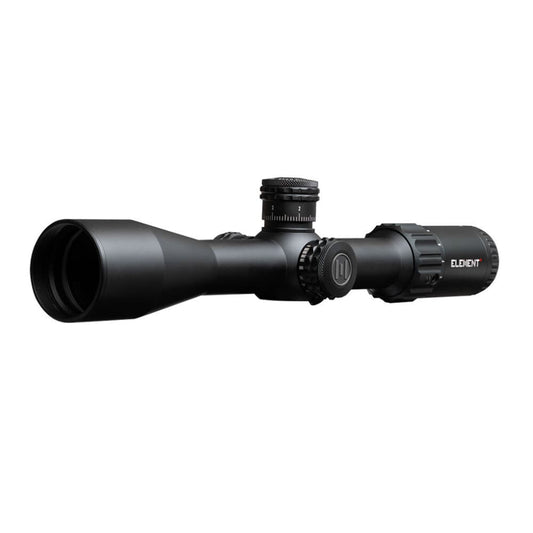

Element Optics Helix 4-16x44 FFP APR-1C MRAD Riflescope 50050 is built for precision shooting in both tactical scenarios and recreational settings. Featuring a First Focal Plane reticle, it allows for accurate range estimation and holdovers, regardless of magnification. The advanced optical system provides exceptional clarity and brightness, making it ideal for various lighting conditions. With a magnification range of 4x to 16x, this riflescope adapts seamlessly to close encounters and long-range engagements.
Durability is a priority in the Helix design, ensuring it withstands outdoor rigors without compromising performance. It includes precise MRAD adjustments for consistent accuracy and weighs just 23.8oz, making it suitable for extended use. This combination of innovative features and robust construction positions the Element Optics Helix as a reliable choice for serious shooters who value performance and practicality.
Features:
- FIRST FOCAL PLANE RETICLE for accurate range estimation and holdovers at any magnification.
- OUTSTANDING OPTICAL CLARITY ensures bright, clear images in various conditions.
- VERSATILE MAGNIFICATION RANGE from 4x to 16x for adaptability in multiple shooting scenarios.
- DURABLE CONSTRUCTION designed to withstand tough environments for long-lasting performance.
- MRAD ADJUSTMENTS allow for precise and repeatable dial-in, enhancing accuracy.
- LIGHTWEIGHT DESIGN at 23.8oz, perfect for all-day carry without compromising strength.
- WIDE FIELD OF VIEW lets you quickly acquire targets, essential for tactical and recreational use.
- EASY PARALLAX ADJUSTMENT from 15yds to infinity ensures sharp focus on your target.
Technical Specifications Table
| Specifications | Details |
|---|---|
| Magnification Range | 4x - 16x |
| Lens Diameter | 44mm |
| Field of View | 26.2-6.55 ft @100yds |
| Eye Relief | 3.7” |
| Length | 360mm (14.2”) |
| Weight | 23.8oz (675g) |
| Reticle Position | First Focal Plane |
| Turret Adjustment | 1/10 MRAD |
What’s in the Box?
- Element Optics Helix 4-16x44 FFP Riflescope
- Lens covers
- Padded case
- Instruction manual
Customer Reviews
"The clarity is unreal! I couldn't believe how much detail I could see at distance." - Jake R.
"Perfect for my tactical needs. MRAD adjustments are spot on!" - Sarah T.
FAQ
What is the advantage of a First Focal Plane reticle? The FFP design allows you to use the reticle for range estimation and holdovers at any magnification level, making it an essential feature for precision shooting.
How does the Element Optics Helix compare to other riflescopes? The Helix offers a competitive magnification range and superior optical quality, making it a great choice for both tactical and recreational shooters when compared to other brands in the same category.
Is this scope suitable for beginners? Absolutely! The user-friendly features, such as easy adjustments and clear optics, make it perfect for both novice and experienced shooters.
Similar Models
If you’re on the hunt for additional high-performance optics, check out the Element Optics lineup. Explore models like the Element Optics Titan 5-25x56 for remarkable long-range shooting or the Element Optics Nexus 3-18x50 for versatility in the field. Discover our full collection for exceptional optics tailored to your shooting adventures.
You May Also Like
Here’s some of our most similar products people are buying. Click to discover trending style.







